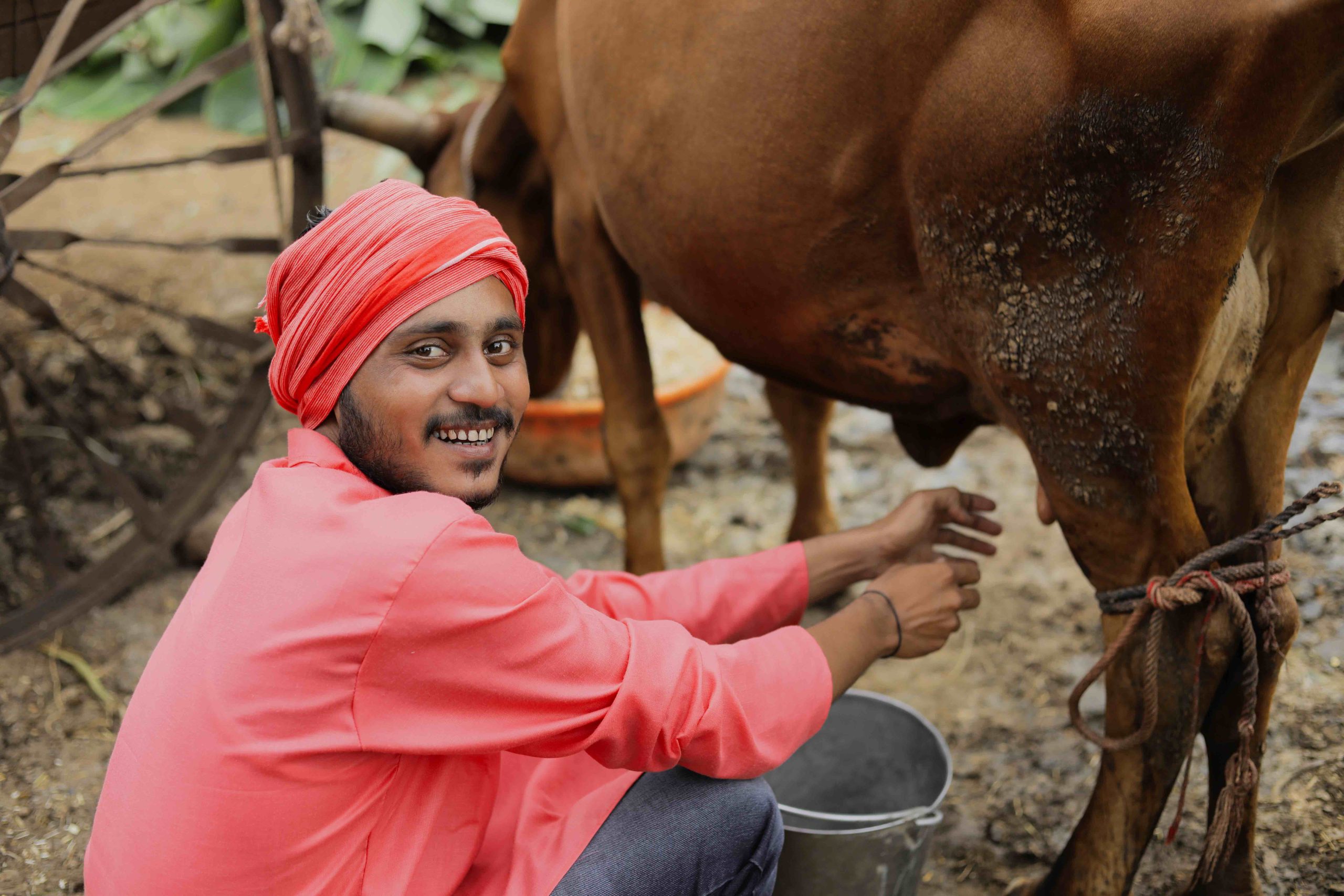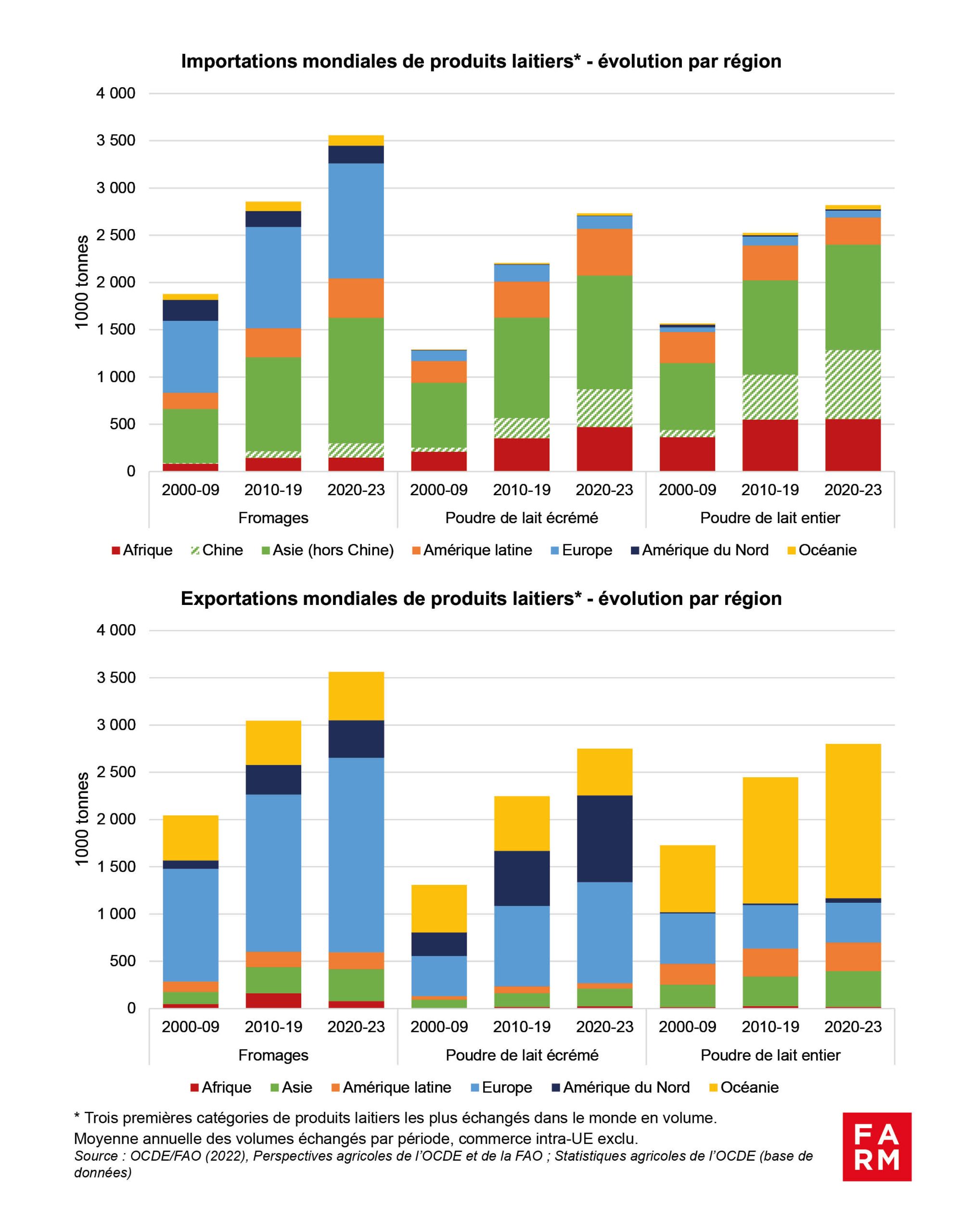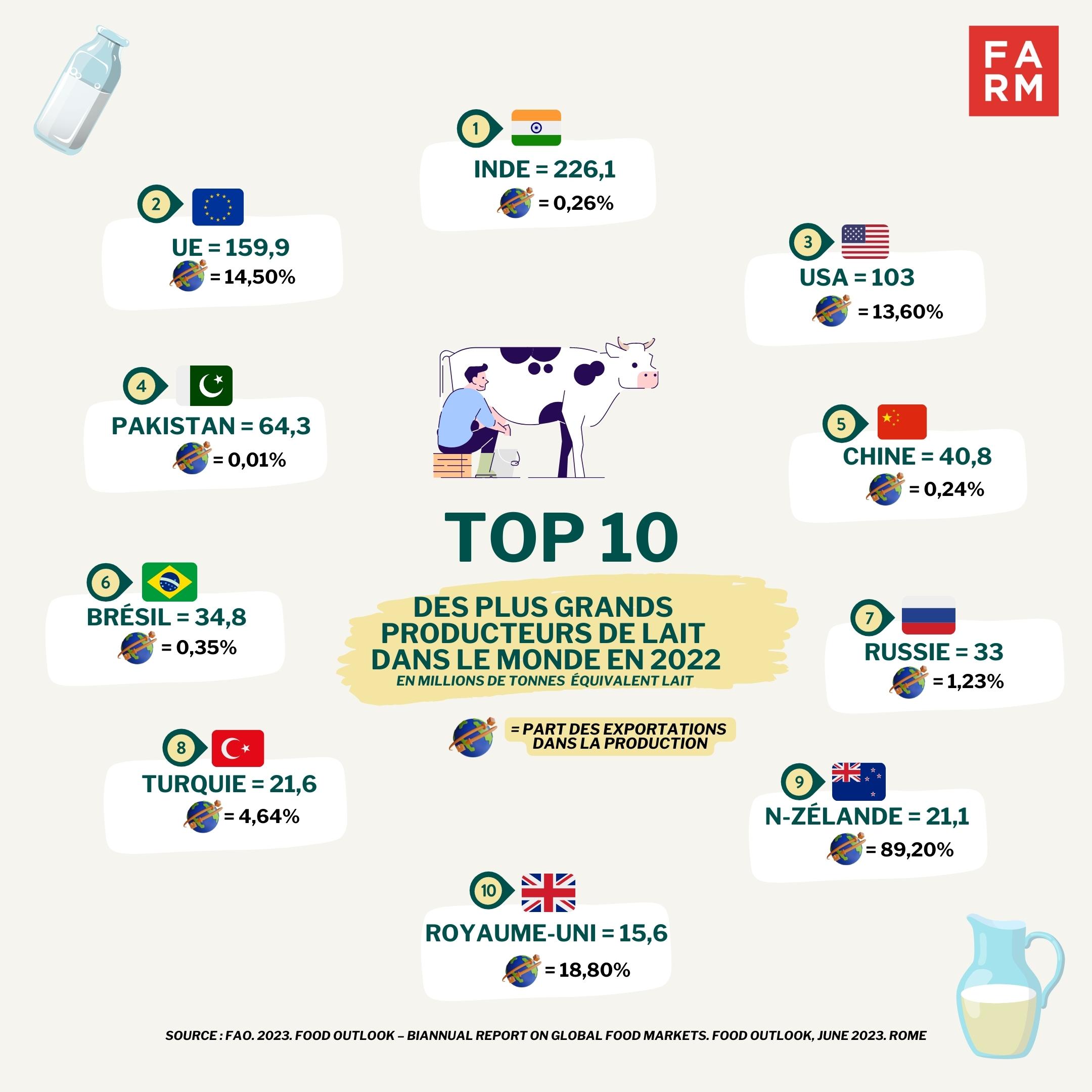Milk Markets: Where Does Globalization End?
In 2022, for the first time in two decades, the global dairy market contracted, despite production remaining slightly up. The current crisis of agricultural and food price inflation is one of the main causes. This short-term observation leads us to offer an overview of a sector that has faced numerous changes over the past twenty years.

A market dominated by uncertainties
Global milk trade is currently experiencing a sharp decline, driven by several factors. Global prices for industrial dairy products have soared, reflecting the increase in agricultural and food prices caused by the Covid-19 pandemic. This has led to higher producer milk prices, while input prices (fertilizer, energy, animal feed) have also increased. As a result, producer margins have declined. This has led to a decline in production in the world's main exporters (EU, USA, New Zealand, Australia, Argentina, Uruguay, Belarus, United Kingdom) and, consequently, to a reduction in exports. At the same time, demand has slowed in some importing regions as economies weaken and purchasing power declines.
This decline in global dairy trade highlights its high price sensitivity, both on the production and consumption side. The increasing liberalization of dairy markets, which reached a new level during the 2000s, has made many domestic markets more permeable to international price volatility. This market instability weakens production systems. In the main exporting basins, there are also significant uncertainties regarding a potential decline in milk collection linked to a drop in producer prices.
Consumption levels have shown signs of decline in developed, emerging, and developing economies, with food inflation having varying degrees of rapidity and severity. It is difficult to predict the duration of the inflationary shock and its longer-term impact on food prices and purchasing power. The major trends that govern the functioning of dairy markets could well change in the future.
Looking back at the development of consumption
The evolution of dairy product consumption, in terms of quantity and quality, is the result of complex economic and social phenomena. Global dairy consumption has grown as a result of several factors. Population growth, combined with rising incomes among certain segments of the population, particularly the middle classes, has fueled this development. At the same time, the urbanization of lifestyles in the metropolises of emerging countries has led to changes in dairy product consumption patterns, driven by the industrialization of value chains and the development of global trade. In addition, people's dietary preferences and traditions remain a strong determinant of demand in terms of product types and quality.
Developed countries initially drove the growth in global dairy consumption. Since the 1990s, however, It is mainly emerging and developing countries that have become the engine of this growthThis phenomenon will also increase in the years to come.[1].
Growth in global trade driven in part by milk powder
Over the past twenty years, global trade in dairy products has grown in response to this quantitative and qualitative shift in consumption. Two major phenomena characterize this evolution:
- Growth in trade in higher value-added ingredients, such as industrial cheeses, whose trade has more than doubled over the past twenty years, or whey powders. This phenomenon has accompanied the growth in volume and diversification of the dairy industry's offerings. The latter is increasingly consuming ingredients for secondary processing for more varied and higher value-added markets within developed and urban economies.
- Growth in trade in milk powders (fat, skimmed or re-fatted), which have also more than doubled since the mid-2000s.
Global production of milk powder first developed within the European Union and the United States, two producing powers that gradually began to export their surpluses in a context of increasing structuring of international food aid between the 1950s and 1980s.[2].
Milk powder exports have gradually become a complementary supply to local production in many emerging and developing countries. Once rehydrated, the powder is transformed into various dairy products for their domestic market. Global production of milk powder comes from more than 80% of developed countries. and is for more than 90 % destined for developing or emerging countries, led by Mexico, China, Indonesia, Malaysia and Algeria[3].

A polarized market
The milk powder trade reflects the polarization of the global dairy market. Eight exporters account for 35 % of global production while supplying more than 80% of global trade[4]. Among importing countries, Asia alone accounts for more than half of global trade in dairy products (49 million tonnes (MT)[5]). China is the leading importer (17 MT in 2022), while several Southeast Asian countries show very high levels of dependence on imports (Malaysia, Philippines, Indonesia, Thailand). Africa imports lower volumes with 10 MT. These imports are mainly made by Algeria (3 MT), Egypt (1 MT) and the coastal countries of West Africa. These countries, to which we can add Mexico and Russia, show a structural dependence on imports due to production that is not growing as fast as consumption. East Africa, for its part, imports only very small volumes of dairy products.
In many emerging or developing countries, dependence on imports is much lower. Two types of configurations illustrate this. First, in some countries, such as Brazil or Turkey, industrialization of value chains accompanies the development of local production, generating additional needs for industrial products, met by imports. Then, in countries of the Sahelian strip (such as Niger or Mali), it is mainly urban sectors selling in bulk or rehydrating and then processing milk powder that capture imports. Imported dairy products, due to their strong price competitiveness, have become widely distributed in these markets.
Industrial, standardized dairy products offer their own supply and storage flexibility, but they also have significant price variability and organoleptic quality that limits their uses.[6].
Thus, the price competitiveness of dairy products does not prevail in all consumption areas. In many emerging or developing countries, local raw milk remains the majority source of supply for the population., whether it is via self-consumption or via varied processing and trade channels, some of which are informal. Although import dependency rates may vary by region, the volumes traded globally remain small (9 % of global consumption). It is therefore domestic production that generally meets the growing demand for dairy products, much more than the global market.
India, the world's largest producer
Since the 1990s, growth in global production has been driven by emerging countries. In 2015, India became the world's largest milk producer after several decades of sustained growth. (+9.3 % / year on average between 1990 and 2021). Pakistan, 4th world producer, followed a similar pace while Turkey and Brazil experienced an average annual production growth of 4.5 % between 1990 and 2021. China, 5th world producer, experienced much stronger growth in its production (+16.3 % / year on average between 1990 and 2021), but intermittent. Over the same period, the production of the other major world exporters (European Union, United States, New Zealand) grew by only 1% on average.

Family farming at the heart of supply
In all the emerging countries mentioned above, such as Brazil, Algeria, Turkey, as well as in countries dependent on imports and with lower production (such as Senegal and Nigeria), a diversity of livestock systems coexist, ranging from specialized dairy farms, often confined to specific territories, to family mixed crop-livestock systems, to agropastoral and pastoral systems.
Like India, where more than 90% of milk production is carried out on farms with fewer than five animals, or Sahelian Africa where the majority of livestock activities (agropastoral and pastoral) are associated with mobility, the growth of global milk production will rely largely on small family farms.
In these non-specialized systems, dairy production often constitutes additional income from other agricultural activities and non-agricultural multiple. Milk is often a secondary product, part of a diversification strategy of producers, associated with meat production or other services (traction, manure). In this context, the integration of these dairy systems into markets (local or regional) remains a major challenge for the promotion of family farming and its ability to meet demand.
The development of milk production in the coming years will be largely the result of rural development dynamics that are much more complex than the dynamics of specialization and intensification of sectors that have prevailed. Livestock farming also constitutes an essential link in agricultural transitions on an environmental, economic and social level. as the guests of the Transition(s) show reminded us (https://www.youtube.com/watch?v=eRT–3c1cbk). The diversity of family farming and livestock systems must therefore be understood by stakeholders in the agricultural sector, whether public or private, with a view to promoting inclusive development of dairy markets.
[1] OECD/FAO (2022), OECD-FAO Agricultural Outlook 2022-2031, OECD Publishing, Paris,
[2] Samuel Pinaud, 2018, “Political economy of milk powder in West Africa”, Techniques & Culture [Online],
[3] Chatellier V., 2016. International, European and French trade in dairy products: trends and competitive dynamics. INRA Prod. Anim., 29, 143-162
[4] Idele, Global Dairy Markets 2022, Outlook 2023.
[5] FAO. 2023. Food Outlook – Biannual report on global food markets. Food Outlook, June 2023. Rome.
[6] Samuel Pinaud, 2014, Milk powder, the Parisian trader and the Bamako merchant, An economic sociology of globalization, Doctoral thesis.
